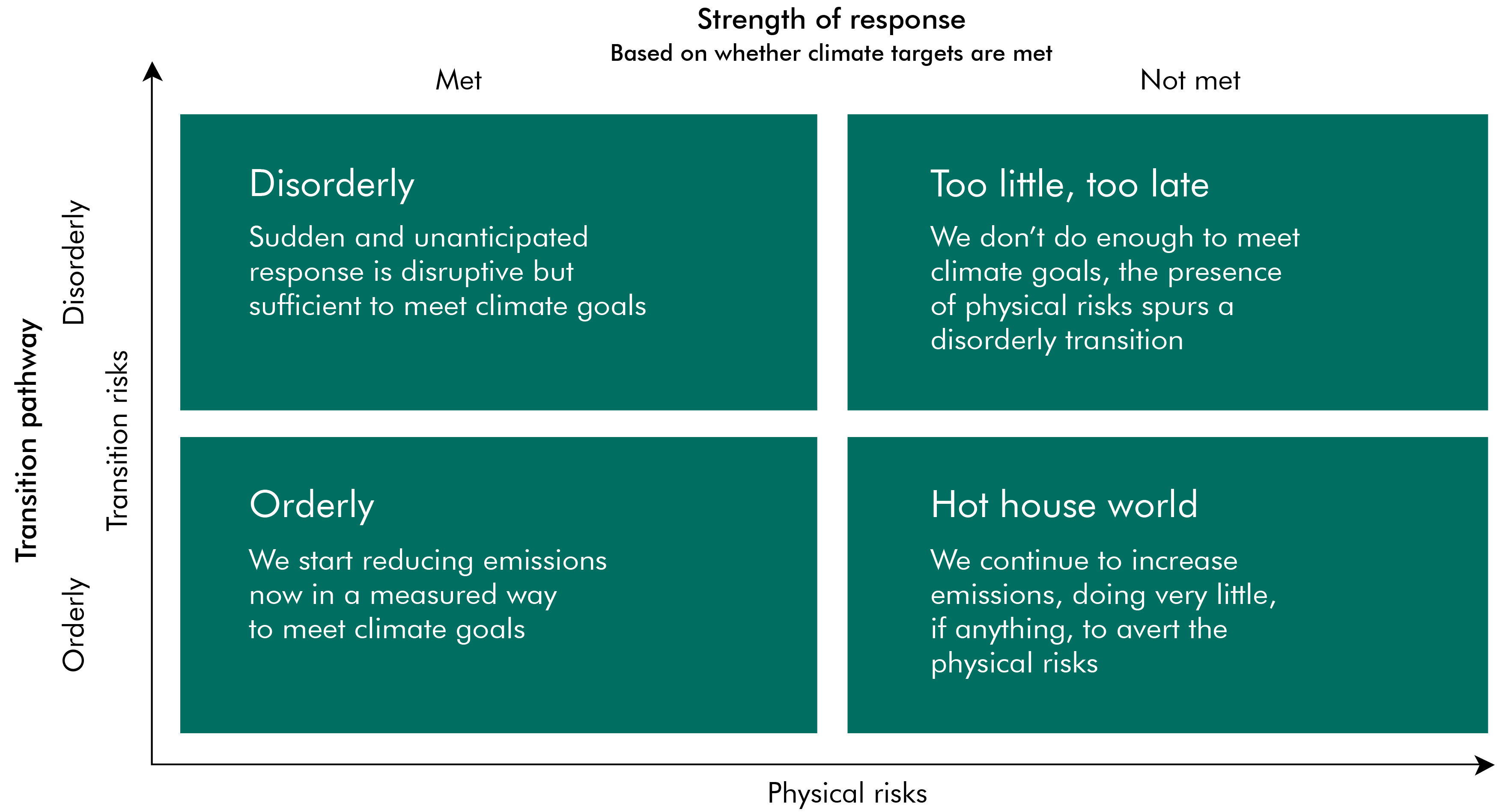In April 2019, the Network for Greening the Financial System (NGFS) issued a ‘call for action’ that sets out the next steps for assessing climate-related risks to financial stability. In this box, we looked at the scenario framework used by the NGFS, and the Green Finance Strategy – in which the UK Government set out how it will ensure the management of climate-related financial risks.
The Network for Greening the Financial System (NGFS) was established in January 2018 and builds on the work of the Taskforce for Climate-related Financial Disclosures (TCFD). In April 2019 it issued a ‘call for action’ that uses the physical/transition framework to set out next steps for assessing climate-related risks to financial stability.a It considers the transmission channels and feedback mechanisms that relate the physical risks from climate change and the transition risks associated with reducing greenhouse gas emissions to the financial system.
To facilitate central banks’ and banking supervisors’ work on climate-related financial stability risks, the NGFS is developing a scenario analysis framework for assessing those risks. It has proposed using four high-level scenarios that capture different settings along two important dimensions: the strength of the greenhouse gas mitigating policy response; and how smoothly and foreseeably those actions are taken. This yields the scenario matrix in Figure A.
Figure A: NGFS scenario analysis framework

In the next phase of the NGFS’s work, it plans to develop data-driven narrative and quantitative parameters on which to base these scenarios, including proposals for key assumptions about policy settings and technological change. This work should facilitate our own next steps.
The TFCD’s recommendations have prompted others to look at climate-related scenario analysis. For example, the Institutional Investors Group on Climate Change has published a guide for investors on how to select appropriate scenarios and apply them to the analysis of investments.b
The Government itself recently released its Green Finance Strategy setting out how it will build on the TCFD recommendations, including by ensuring that all UK listed companies and large asset owners disclose in line with those recommendations by 2022. It will also work to embed the TCFD reporting proposals in public financial bodies and to foster greater transparency in nature-related financial disclosures. In respect of the public sector, it will undertake a review, led by the Treasury, of the costs associated with achieving net-zero emissions by 2050, and will consider risks from climate change and the low-carbon transition in Managing fiscal risks next year. The Government also said that it would be “Clarifying responsibilities for the Prudential Regulation Authority, the Financial Conduct Authority and the Financial Policy Committee to have regard to the Paris Agreement when carrying out their duties.”c
